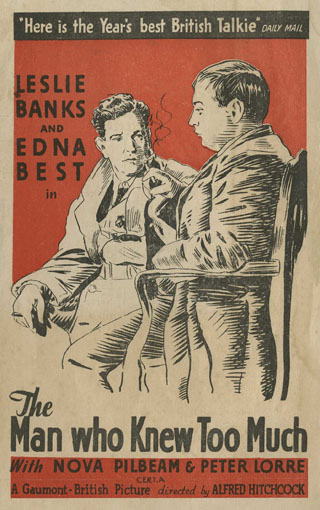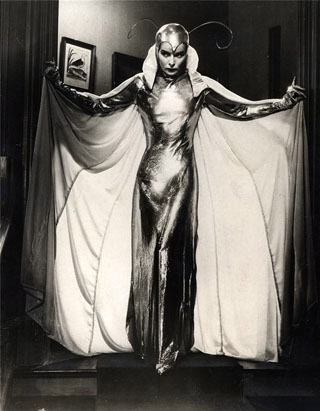More from the Berlinale very soon now, but first, let’s open this one with a bit of viewing (3’10”) from Adrian Martin and Cristina Álvarez López. Transit is hosting their video essay Intimate Catastrophes with an accompanying text. “Emotional memory resides in the narrative trace left by, for instance, ‘the height of that railing and the leap of the adulterer who climbed over it at dawn.'” Their quote’s from Calvino.Meantime, the other day, Adrian Martin tweeted a pointer to Labour in a Single Shot, a project begun in 2011 by Antje Ehmann and Harun Farocki and now set to culminate in a series of exhibitions.
“Interest in Hitchcock seems to be the one constant in the whirligig of tastes in film culture,” writes David Bordwell. “He is a mainstay of home video and cable television; apparently the films can be re-released in perpetuity. Professors love to teach his films. The techniques are obvious and vivid, and the films offer a manageable complexity that encourages interpretation. Class, gender, power, the law—whatever your favorite themes, they’re all on the surface, yet enticingly ambivalent. Not to mention how much fun these movies are to watch.” That post eventually segues into a consideration of Hitch’s love for set pieces. And Criterion‘s running a 1979 piece on The Man Who Knew Too Much (1934) which appeared in the original editions of Bordwell and Kristin Thompson’s Film Art.Ray Carney is still refusing to return Mark Rappaport‘s prints and materials—and now, Boston University has, as Rappaport puts it, “washed their hands of the matter, pretending it’s some sort of a domestic dispute.” Nick Dawson‘s posted Rappaport’s letter to BU administrators at Filmmaker.Jonathan Poritsky, whose day job involves post-production, replies to Ignatiy Vishnevetsky‘s widely admired piece on what film critics need to understand about post-production.From Ryland Walker Knight: “Critical Precepts for the Writer in 2013.”San Francisco. In the Bay Guardian, Dennis Harvey flashes back to the 60’s and early 70’s—and across the Pacific: “Two concurrent local retrospectives highlight the Art Theater Guild’s important but (at least in the West) underseen contributions. The organization is tangentially related to the roster of experimental shorts… in Yerba Buena Center for the Arts and San Francisco Cinematheque’s two-week Fragments of Japanese Underground Cinema 1960-1974 series, which begins this week. But it’s central to the Pacific Film Archive’s already in-progress Chronicles of Inferno: Japan’s Art Theater Guild, continuing through month’s end.”Cambridge. “When he began,” writes Michael Atkinson in the Phoenix, “in the ’80s, Leos Carax was the paradigmatic cerebral movie brat of his day and age, incorporating the older New Wave ethos into the new punk indie vibe and establishing a new generation’s bitter, norm-busting way of looking at the world. But by now, with only five features produced and released in the almost 30 years since, Carax has become something altogether different: an incubus haunting the ebb and flow of movie culture, emerging at unpredictable points with irrationally intense films that throb and bewitch in ways unrelated to whatever’s cool or avant in art-film circles at the moment.” Overdrive: The Films of Leos Carax runs at the Harvard Film Archive from tomorrow through February 24.New York. “Rolling out 66 features in one month, stacked in double and triple features, Film Forum’s 80th-anniversary time-machine series trumpets 1933 as Hollywood’s ‘naughtiest and bawdiest year,'” writes Nicolas Rapold in the L. “That builds on the established brand of pre-Codes having all the fun—the censorial Motion Picture Production Code wouldn’t be enforced until 1934… But another attraction of the 1933 showcase is, put bluntly, all the weird shit—the entertainments gone bonkers, and the experiments that hustle along.”
Writing for Artforum, Melissa Anderson highlights Christopher Strong by Dorothy Arzner, “the only female director in the Hollywood studio system during the late 1920s and ’30s.” Strong “showcases the star-making labor of Katharine Hepburn, appearing in only her second film. As record-breaking pilot Lady Cynthia Darrington, Hepburn swaggers magnificently in jodhpurs and a beret (and, in one spectacular moment, a lamé moth costume, replete with antennae), speeds down English back roads in her sports car, and enjoys an easy, just-one-of-the-lads rapport with her plane crew.”Curated by Jonas Mekas and Johan Kugelberg, Jack Smith: Wait for Me at the Bottom of the Pool opens today at Boo-Hooray NYC.With Daniel Schecter’s Supporting Characters out on VOD and Sam Neave’s Almost in Love opening tomorrow at reRun, both starring Alex Karpovsky, followed by a double feature at the Film Society at Lincoln Center of Karpovsky’s own Red Flag and Rubberneck, Henry Stewart profiles the guy for the L: “He’s the most ubiquitous actor working today because he’s so un-full of shit—and every movie needs somebody to be.”On Sunday, Light Industry presents Issue 4 of the pioneering videocassette magazine Infermental.Seattle. In the Stranger, Charles Mudede recommends catching Pier Paolo Pasolini‘s Mamma Roma (1962, tonight at the Art Museum) and Federico Fellini‘s 8½ (1963, at the Grand Illusion from tomorrow through February 21): “What we always find looming in the background of these films and others of their moment (La Dolce Vita, Rocco and His Brothers) is America’s cultural and economic power. In 8½, it takes the form of the American journalist; in Mamma Roma, it’s the construction of new apartment buildings. The older Italy is in the front and still vital, but we get the sense that it’s gradually being transformed or soon will be absorbed by the new order being imposed by the American state. This new order is what we now call globalization.”Nashville. Louis C.K.’s Pootie Tang (2001) is at the Belcourt tomorrow and Saturday night and, in the Scene, Jason Shawhan explains why you really do need to go out and see it.In the works. Jim Jarmusch “will serve as executive producer of the documentary feature project Smash the Control Machine,” reports Birgit Heidsiek at Cineuropa. “The film tells the story of Howard Brookner, who died from AIDS in 1989 after he made three films—the documentary Burroughs: The Movie, Robert Wilson and The Civil Wars, and Bloodhounds of Broadway with Madonna and Matt Damon, which was never released.”Obit. Ronald Bergan for the Guardian: “Alan Sharp, who has died of brain cancer aged 79, once claimed that as a screenwriter he was most interested in ‘moral ambiguity, mixed motives and irony,’ all of which are applicable to two of his best movies, the western Ulzana’s Raid (1972), directed by Robert Aldrich, and the thriller Night Moves (1975), directed by Arthur Penn. Most of his screenplays were written in the 1970s and reflect the era in which America was suffering the effects of the Vietnam war and post-Watergate paranoia. This goes some way to explaining the bleakness and cynical sense of destiny in Sharp’s films, which he called ‘existential melodramas.'”For news and tips throughout the day every day, follow @KeyframeDaily on Twitter and/or the RSS feed. Get Keyframe Daily in your inbox by signing in at fandor.com/daily.





